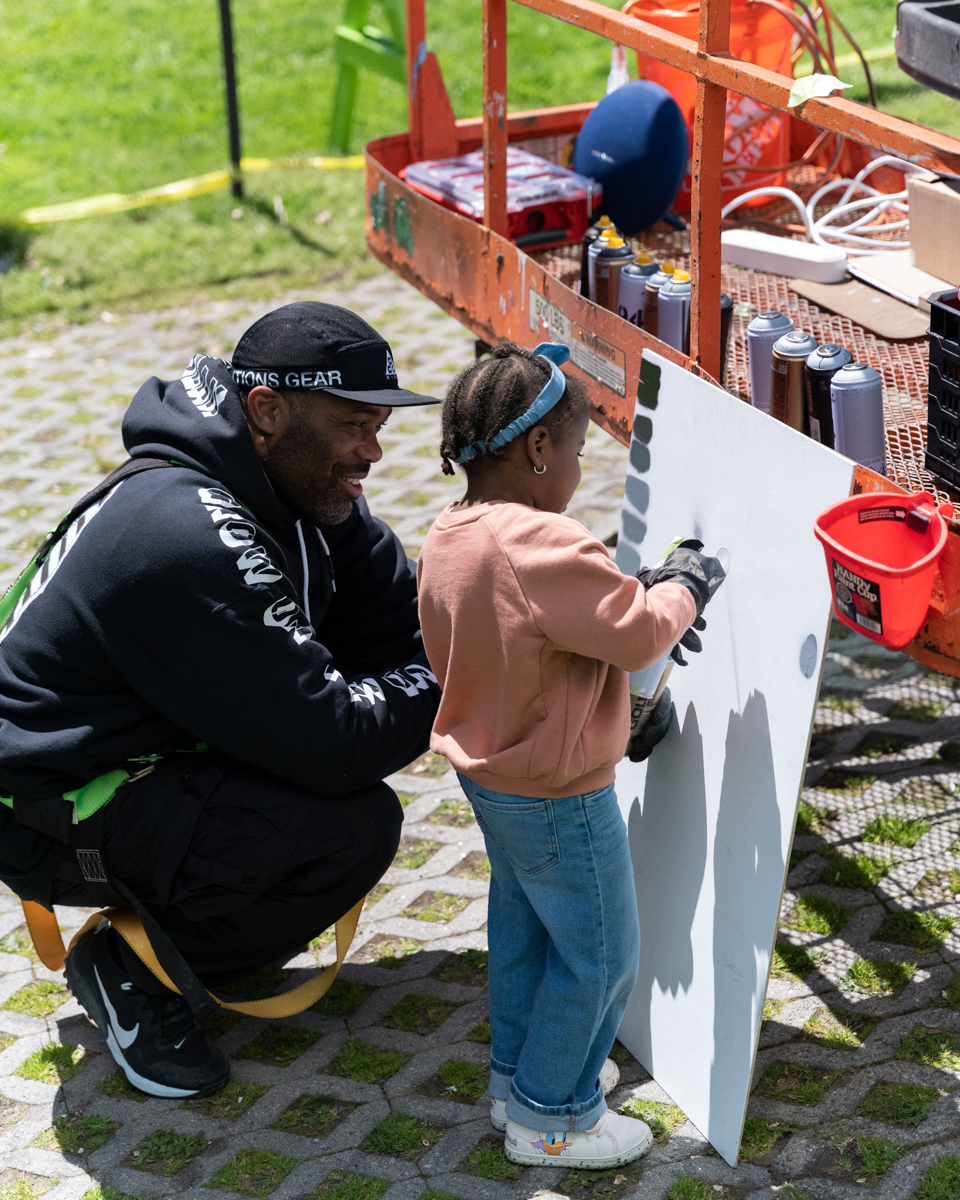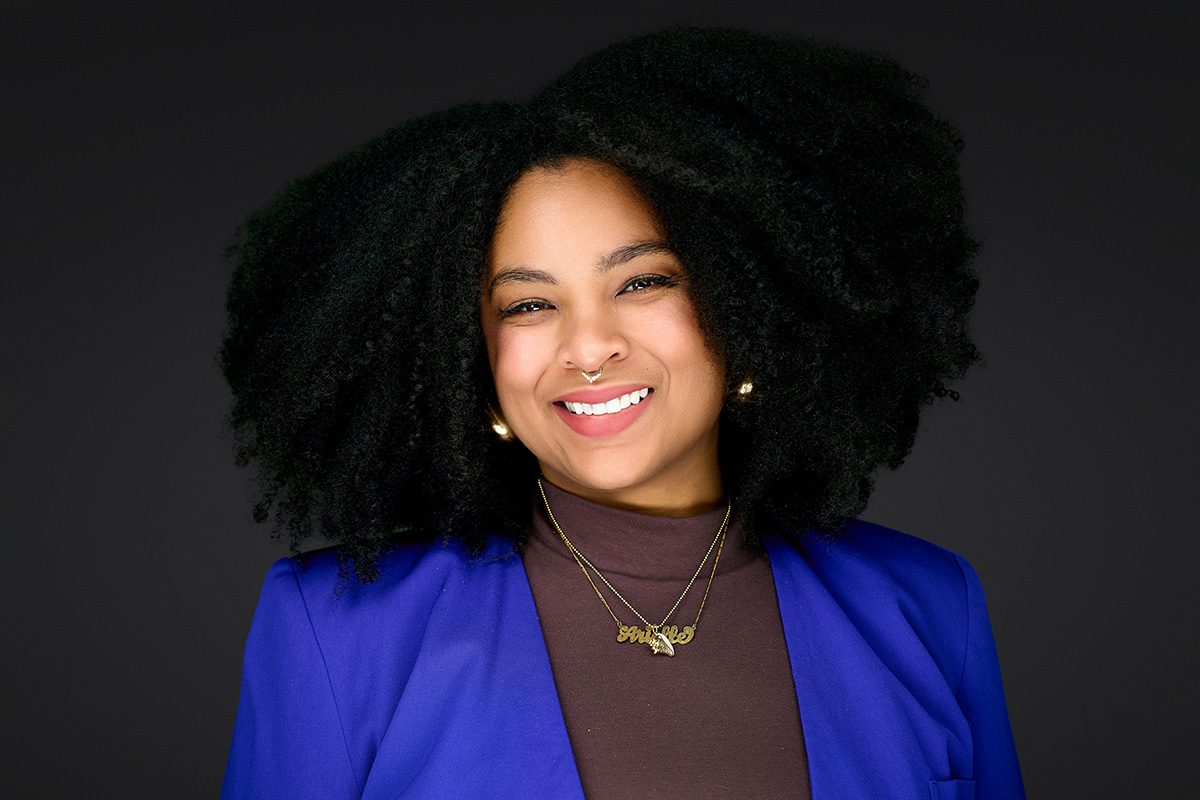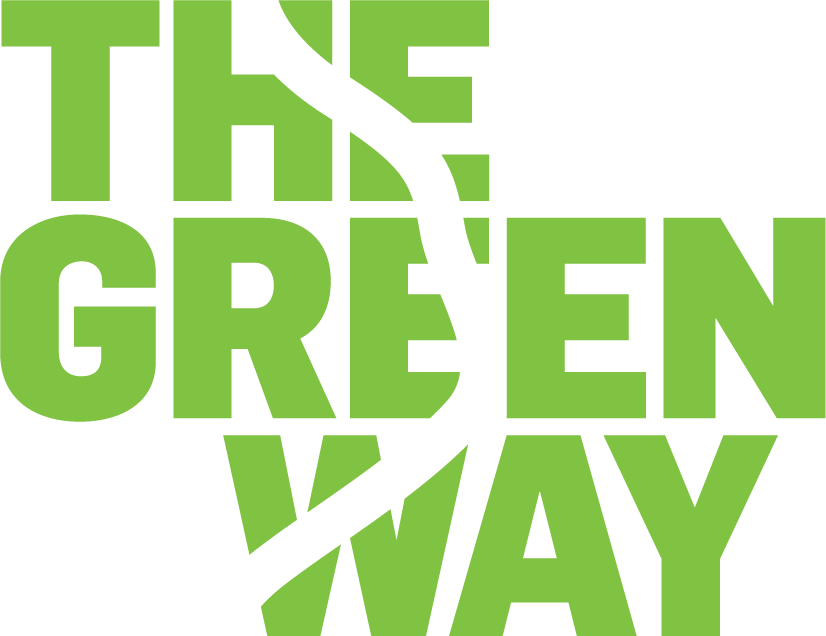
Last summer, as we prepared to transition from our “Breathe Life Together” mural by Rob “ProBlak” Gibbs (@problak) to our new mural by Jeffrey Gibson, our Public Art Team commissioned two essays by local writers to share what the previous mural from Problak had meant to them as Black creatives and residents of Boston.
Arielle Gray, a reporter with WBUR and artist, and Dart Adams, a local historian and writer, wrote powerful essays describing how ProBlak’s work allowed the Black community to feel a sense of belonging and union within the greater landscape of Boston.
“For Bostonians of color, our relationship with spaces and visual markers is precarious, at best,” Gray writes. “With drastically rising rents and encroaching urban renewal, we are intimately familiar and aware of the fact that our neighborhoods are changing in ways that are painful…But looking up at “Breathe Life” gave me a very different feeling that pulsed with a sense of belonging. It was one of the few times that I could think of (within recent years) that a new mural actually felt like it was reflecting the community it was situated in, instead of attempting to obscure it.”
Read Gray’s full essay below, and stay tuned for next week’s essay by Dart Adams. If you, too, have felt a positive connection to ProBlak’s mural, we’d love to hear from you at [email protected]
Reflections on Breathe Life Together by Arielle Gray
When I first started writing about Rob “ProBlak” Gibbs, it was in the heat of the summer of 2019. A few years prior, I caught glimpses of his “Breathe Life” mural while going down Blue Hill Avenue. At the time, “street art” was becoming increasingly popular and murals were popping up all over Boston. I was accustomed to seeing brightly colored works splashed across the sides of buildings or near storefronts but so many of them felt empty, like well-executed illusions, devoid of any deeper meaning or connection to the space and place that they were in.
Over time, I began to associate my ride down Blue Hill with ProBlak’s mural. Many humans are visual creatures – visible markers are often how people relate to places as they tie core memories and experiences to certain landmarks or locations. I will forever link my childhood spent at the YMCA off of Warren Street in Roxbury to the “Africa is the Beginning” mural, by Gary Rickson, that’s painted on the side of the building. Ask any native of color where the affectionately nicknamed Big Head Museum is (it’s really called the National Center for Afro-American Artists) and we’ll tell you its exact location, visually guided by John Wilson’s massive sculpture, “Eternal Presence,” that gleams proudly on the museum’s lawn.
But for Bostonians of color, our relationship with spaces and visual markers is precarious, at best. With drastically rising rents and encroaching urban renewal, we are intimately familiar with and aware of the fact that our neighborhoods are changing in ways that are painful.

We acutely feel the loss of notorious community haunts and favorites, not just because they’re no longer there but because of how intermingled they are with our memories. These places and visual markers remind us that we’re home and when we lose them, we suddenly find ourselves redefining what home is and what it looks like. The painted-over walls, the empty storefronts are eulogies for what used to be. We search for ourselves in Boston’s landscape and end up looking into a void.
But looking up at “Breathe Life” gave me a very different feeling that pulsed with a sense of belonging. It was one of the few times that I could think of (within recent years) that a new mural actually felt like it was reflecting the community it was situated in, instead of attempting to obscure it. ProBlak’s signature style clearly gestures towards his roots in graffiti, an art form that arguably predates and is the predecessor for what we now call “street art.” While graffiti is still maligned and intentionally misunderstood, “street art” has become one of gentrification’s favorite tools.
Breathe Life Together: a portal into what could be
It’s one of the things that ProBlak and I discussed when I finally interviewed him in 2019 for WBUR as he was completing “Breathe Life 3” on Tremont Street. Graffiti artists utilized the art form to turn the walls and buildings of their neighborhoods into their own galleries, visually commanding and taking up space.
Graffiti does not ask for permission, a transgression in the eyes of the state but a gift of autonomy for the artists who practice the craft. “It was the one thing that was undeniably ours and we had it since the subway was elevated all the way to Downtown,” ProBlak told me in another 2019 interview for Boston Art Review. “That was the spine to the city from our neighborhoods. So whatever representation we had culture-wise, it was there.”
That elevated Orange line has long been demolished and so have other favorite graffiti spots, like the abandoned warehouse that used to stand right outside of Nubian Square. This corresponds with the slow change to Boston’s landscape as buildings are torn down or renovated and then resurrected into gleaming condos and new storefronts. Along the way, street art became gentrification’s visual companion, a pretty artistic sticker (as ProBlak calls it) slapped over a gaping hole where people of color used to be.
But ProBlak’s work is a visual interjection, a pertinent intervention in the erasure of people of color from the landscape of Boston. Black and brown children play a large role in his “Breathe Life” series. In these murals, they are juxtaposed with the vibrant purples, blues and blacks of outer space. Though we never really discussed afro-futurism the times I interviewed him, ProBlak undoubtedly makes use of its aesthetic, piercing the veil between the present and future. His murals become portals into what is and what could be, if Black and brown people are able to continue to live and thrive in their neighborhoods.
The relationship between the mural and the viewer
Tina M. Campt writes in “A Black Gaze: Artists Changing How We See” that it is “a Black gaze that shifts the optics of “looking at” to a politics of looking with, through, and alongside another.” There is an aesthetic of refusal in ProBlak’s work. While his murals certainly provide visual representation of POC, it is not all that they accomplish. ProBlak told me in that 2019 interview that his murals act “like mirrors. People don’t even have to know what the story is behind the artwork. But they’re collaborating with it and they’re interacting with it by making a piece of it, by making it a version that they can talk about using their own voice.”
The true power of ProBlak’s work lies in that relationship between the mural and the viewer. We are able to use his murals as a lens through which we can interpret the world around us, a telescope through which we are able to catch a glimpse of our future. Inherent in ProBlak’s work is an invitation to dream, a beckoning to think of possibility, a dare to be visible in a world that is constantly trying to visually erase us.
“Breathe Life Together” is a culmination of that artistic ethos. Though the mural is a specific portrayal of his daughter (a departure from his usual ambiguous subjects), it still manages to feel like a collective representation. From the Kangol hat to the Adidas tracksuit and shelltoes, everything about “Breathe Life Together” pulls apart the white-washed illusion of Boston and injects it with a different kind of story. Our story.
A true snapshot of the soul of the city
When “Breathe Life Together” was unveiled in 2022, it seemed as though all of Black and brown Boston was celebrating. We were united in our joy and jubilation. We came together to look up at the massive mural, feeling more than represented –we felt memorialized and honored, even with the knowledge that the mural was temporary. The image of ProBlak’s daughter became a patron saint of Boston’s brown and Black communities, forever committed to communal memory. A true snapshot of the soul of the city.
Though “Breathe Life Together” will be replaced with a new work, it has created an indelible mark on the visual language of Boston –it became a marker of the presence of Black and brown people in the city. Like ProBlak’s other works, “Breathe Life Together” was a reminder that Boston, in all of its complicated, gentrifying glory is our home too.
For the time that it was up, that mural was a song about the refusal to be erased. It became a liturgy of what it means to belong.

Arielle Gray is a storyteller and artist currently based in Boston. She is a reporter at WBUR, where she reports on Black and brown communities through the lens of art and culture. Her work examines the liminal spaces between marginalized identities to find places of possibility and creation. Her writing has appeared in NPR, Cosmopolitan, Glamour, the Boston Art Review and ZORA Magazine, and her artwork has been featured in the Boston Globe and Boston Art Review.
Mural photography and candid by G. Ortiz



